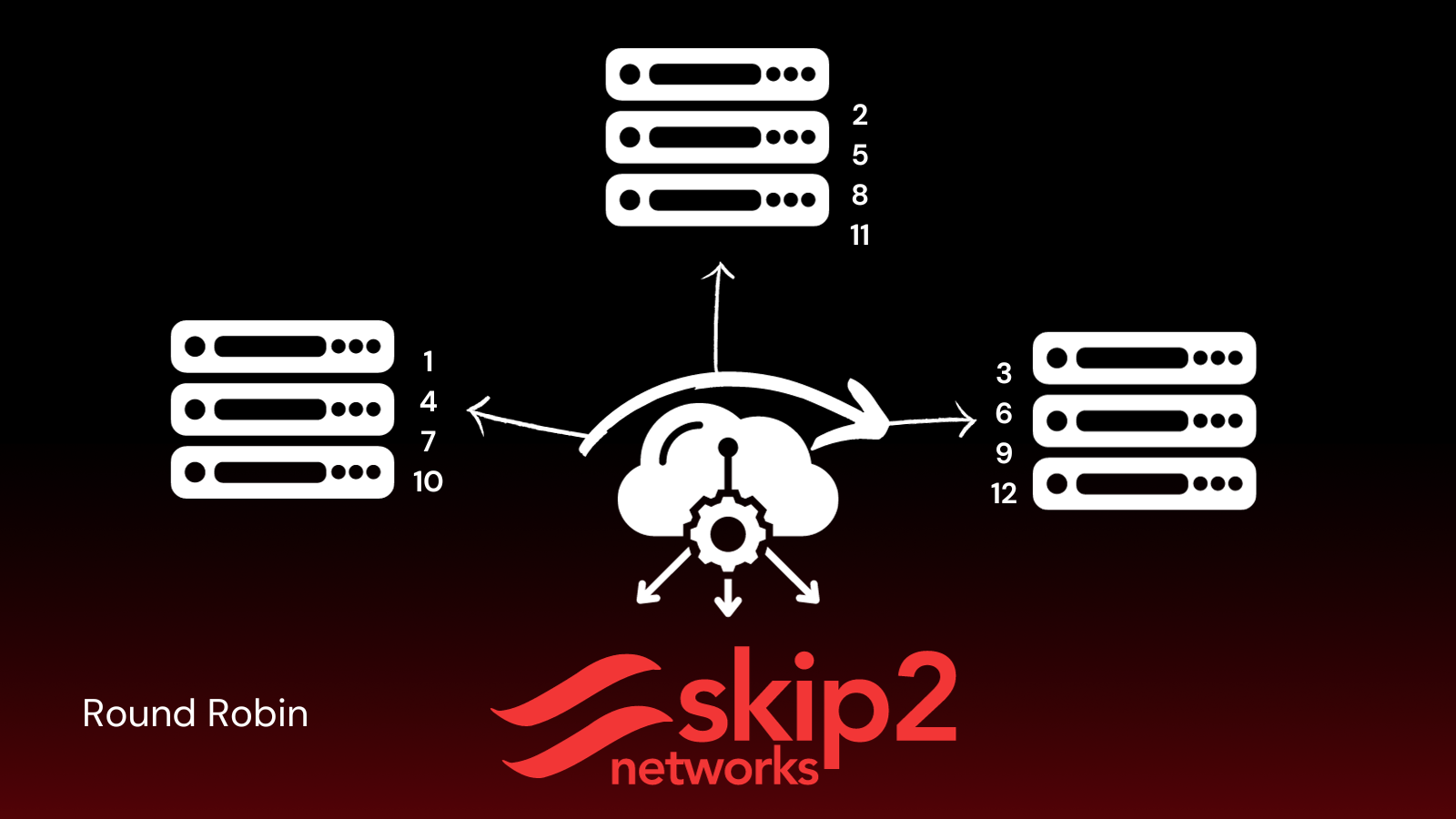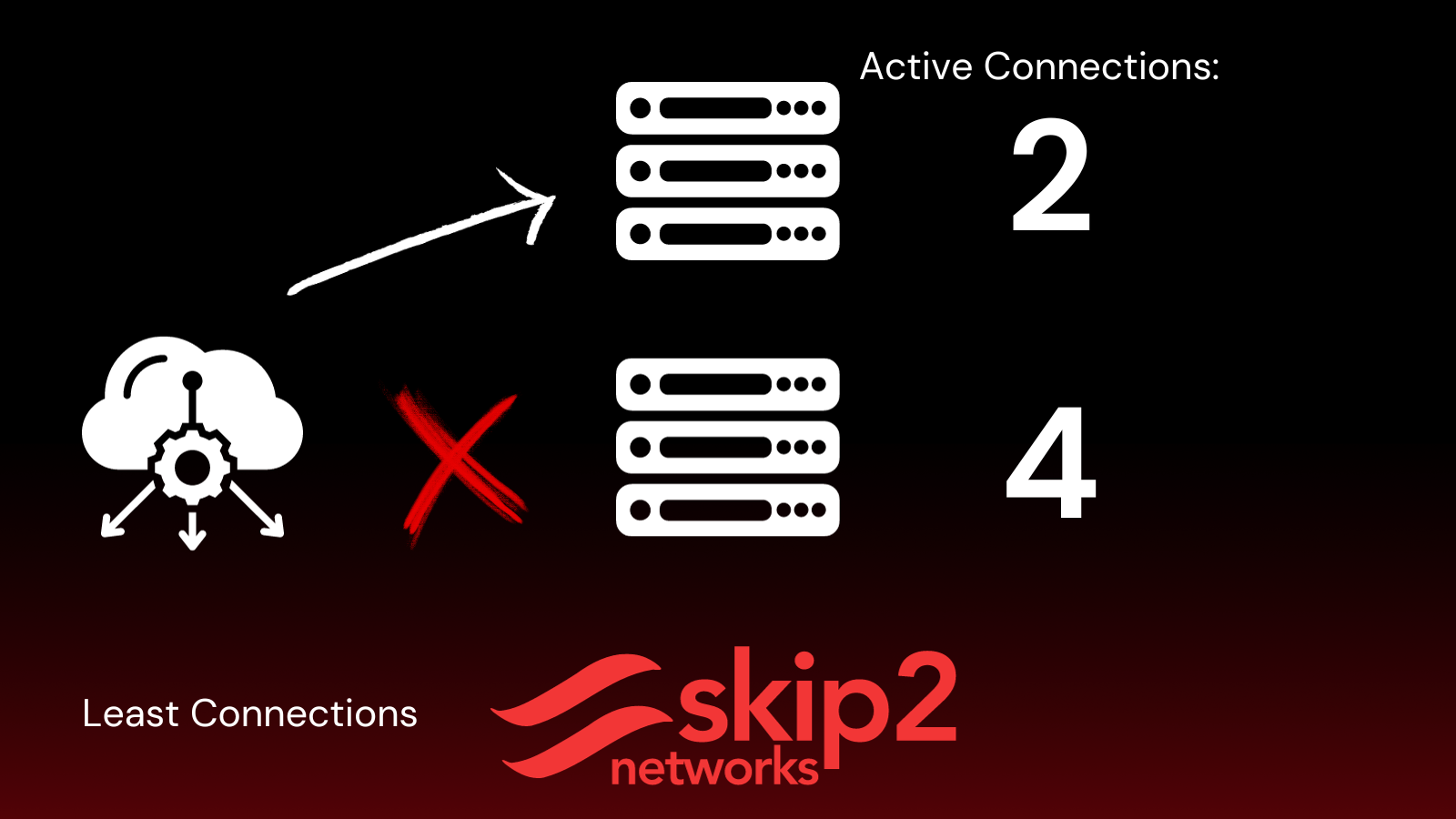- Published on
Exploring Load-Balancing Techniques for Web Applications
- Authors

- Name
- Alex Lee
- @alexjoelee
Load balancing is a critical aspect of ensuring a seamless user experience when hosting web applications by distributing the load across multiple servers or resources to optimize performance and prevent any single resource from becoming a bottleneck. In this article, we'll discuss and compare three different load balancing techniques.
The Simplicity of Round Robin:
Round Robin Load Balancing is akin to taking turns in a circular manner. When a request hits, it's forwarded to the next server in line, and the cycle continues, reverting back to the first server once all servers have been utilized - similar to how you might deal cards when playing poker. This cycle repeats for every incoming request, ensuring an equitable distribution of load across all servers. 
Benefits of Round Robin Load Balancing:
Ease of Implementation:
- Round Robin is simple to implement and manage. It doesn’t require complex algorithms or extensive setup, making it a go-to choice for many developers.
Fair Load Distribution:
- When all servers have similar capacities, Round Robin ensures that each server gets an equal share of the workload, promoting a fair distribution of traffic.
Cost-Effectiveness:
- Due to its simplicity, Round Robin is a cost-effective solution that doesn’t demand high computational resources or sophisticated hardware.
Improved Performance and Scalability:
- By spreading the load, Round Robin aids in maintaining a responsive and reliable web application, even as the number of requests increases.
Considerations and Limitations:
While Round Robin is efficient, it’s not without its caveats:
Lack of Session Persistence:
- Round Robin doesn’t inherently support session persistence, which could be problematic for web applications that require a continuous user session.
Unaware of Server Health:
- The method doesn’t account for the health or performance of servers. If one server is down or performing poorly, Round Robin will still route requests to it.
Not Ideal for Varied Server Capacities:
- In environments with servers of varied capacities, Round Robin may not be the optimal choice as it doesn’t account for the different performance levels of servers.
Conclusion:
Round Robin Load Balancing stands as a testament to the elegance of simplicity in managing web application traffic. It’s a worthy contender for scenarios where servers have similar capabilities and the application doesn’t demand session persistence. As with any technology decision, understanding the nuances and the trade-offs is key to making an informed choice.
The Core of Least Connections:
The Least Connections Load Balancing method operates on a simple yet effective principle: route the incoming request to the server with the fewest current active connections. Unlike other methods that distribute requests evenly without regard to the server's current load, the Least Connections method dynamically assesses the load on each server and makes intelligent routing decisions to ensure a balanced distribution of traffic. 
Advantages of Least Connections Load Balancing:
Adaptive Load Distribution:
- This method adapts to the current load on each server, ensuring that servers are not overwhelmed with more requests than they can handle.
Optimal for Varied Server Capacities:
- When servers have differing capacities, the Least Connections method shines by routing fewer requests to less capable servers and more to the robust ones.
Improved Performance:
- By preventing overloading of any single server, the Least Connections method contributes to enhanced application performance and a better user experience.
Reduced Latency:
- Users are likely to experience reduced latency as their requests are routed to less busy servers that can process the requests promptly.
Considerations and Limitations:
However, the Least Connections method is not without its challenges:
Complexity:
- It requires continuous monitoring of active connections on each server, making it slightly more complex compared to simpler load-balancing techniques.
Inadequate for Uniform Server Capacities:
- If all servers have similar capacities, the added complexity of the Least Connections method might not offer significant advantages over simpler methods.
Potential Delays in Adjusting to Rapid Load Changes:
- There may be a delay in redistributing load when there’s a rapid change in the number of active connections, potentially affecting performance.
Conclusion:
Least Connections Load Balancing is a dynamic and intelligent method to ensure that web applications remain responsive and reliable, especially in environments with servers of varied capacities. By judiciously distributing requests based on the current load on each server, this method promotes a balanced workload, contributing to an optimized user experience.
Sticky Sessions (using an IP, HTTP header, or some other identification hash)
Sticky sessions Load Balancing employs a deterministic algorithm that generates a unique hash key based on a characteristic of the incoming request. This characteristic is generally non-personal information about the incoming request, such as public IP address, a preexisting stored application cookie, an HTTP request header, or some combination of several artifacts. This hash key is then used to assign the request to one of the servers in the pool. The beauty of this approach lies in its consistency - a user will always be connected to the same server as long as the server is available. 
Advantages of IP Hash Load Balancing:
Session Persistence:
- This method inherently supports session persistence, which is crucial for web applications where users engage in transactions or data entry over multiple interactions.
Predictable Server Assignment:
- The deterministic nature of IP Hash Load Balancing ensures predictable server assignment, which can be useful for troubleshooting and performance tuning.
Balanced Load Distribution:
- While maintaining session persistence, IP Hash Load Balancing also ensures a balanced distribution of load across the servers, especially in environments with a large number of unique clients.
Enhanced User Experience:
- By ensuring session continuity, users enjoy a seamless experience, which is particularly beneficial in applications that require login or have shopping carts.
Considerations and Limitations:
While IP Hash Load Balancing has its merits, there are considerations to keep in mind:
Potential for Imbalanced Load:
- In scenarios with a limited number of unique clients, or if the hash algorithm leads to clustering, some servers may receive a disproportionate amount of traffic.
Complexity:
- The hashing algorithm adds a layer of complexity compared to simpler methods like Round Robin.
Dependency on Client IP:
- The method relies on the client sending viable information that could change in some mobile or VPN scenarios, potentially disrupting the user's session.
Conclusion:
Sticky Session Load Balancing is a potent tool in the arsenal of web application optimization. It melds the best of both worlds by ensuring session persistence while distributing the load across servers. This technique is particularly well-suited for applications that demand session continuity along with balanced load distribution.
Ultimately, it's going to depend on what web application you're hosting, how it was built, and what environment it's running on. Luckily, load balancing is a heavily-researched and understood topic, giving you a head start on deciding what is best for your use case.